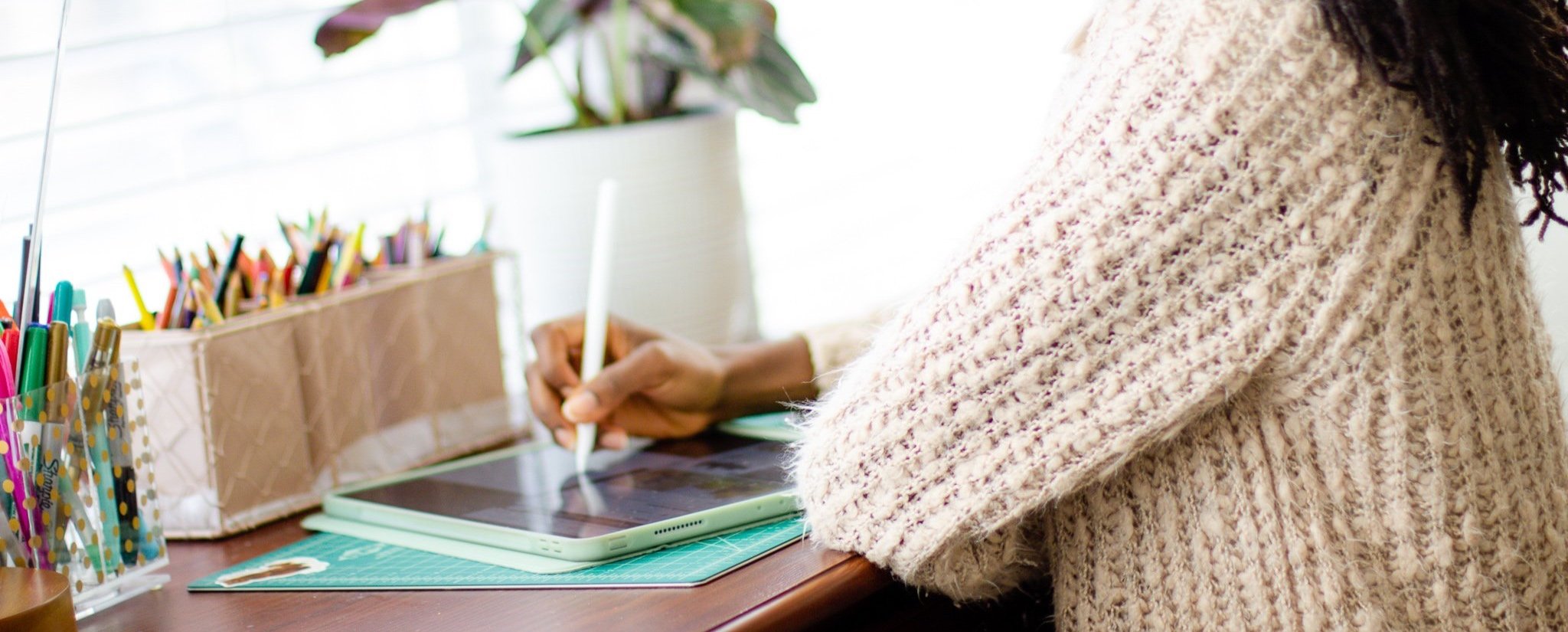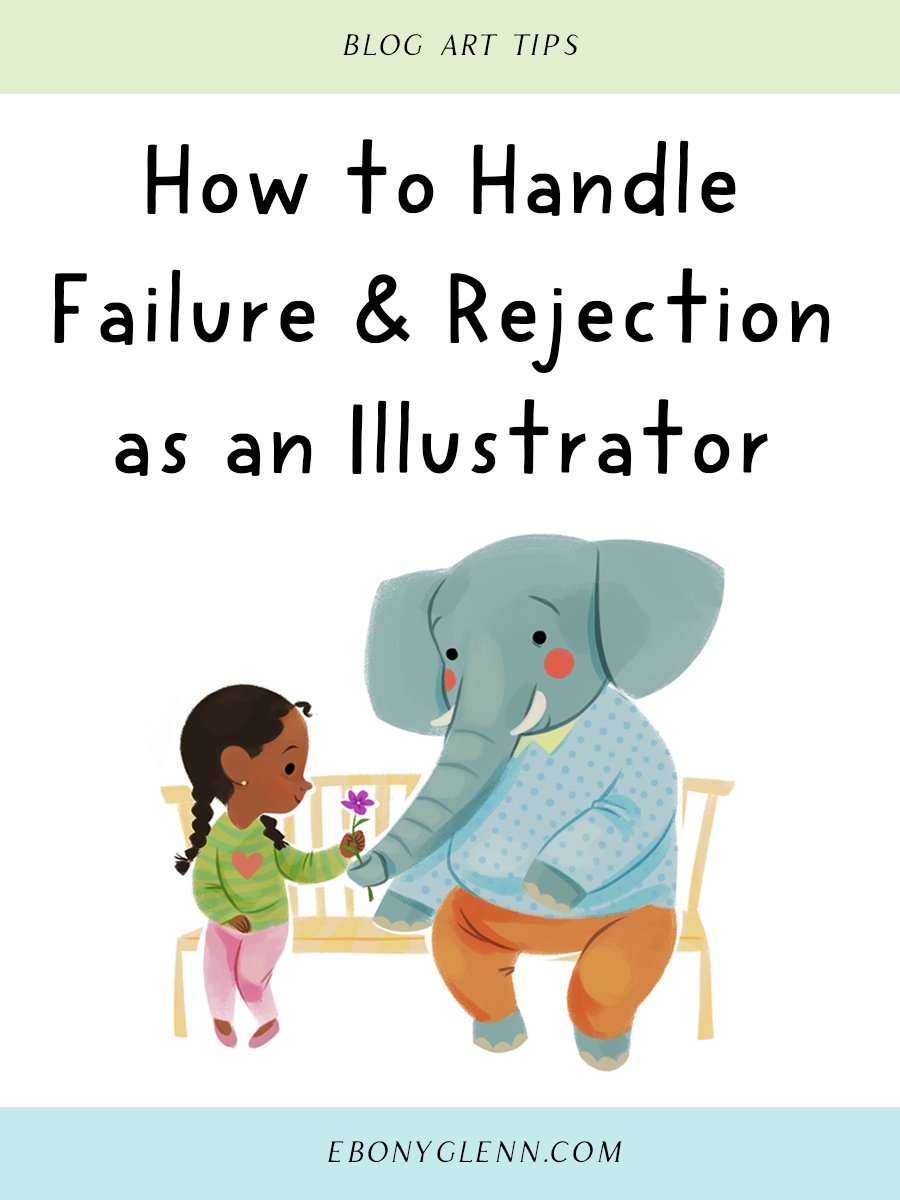
Art & Story
Sharing tips, inspiration, and lessons from an artists’ journey.
How to Handle Failure and Rejection as an Illustrator (or Artist)
As artists, we are bound to experience failure and rejection on our artist journey from time to time. It’s inevitable. No matter how much we try, we all will eventually encounter those roadblocks that set us back and make us doubt ourselves.
But despite this, our failures and rejections do not have to be hindrances. Nor do they have to define us. In fact, I believe that they can be aides on our journey.
Failure and rejection can help us reach our full potential should we choose to think differently about them.
While I do not have a magic formula for avoiding failure altogether, I have found some ways to overcome those feelings of defeat and despair that accompanies it. Experiencing failure and rejection can be discouraging, but we do have the power to transmute our losses into future wins.
In this post I will give you some advice for dealing with failure and rejection as artists and illustrators. I hope you find the strength within yourself to overcome your challenges and continue on your journey so you can share your talents with the world.
Acknowledge How You Feel
To deal with the discomfort that comes with failure and rejection, we need to acknowledge, process, and release the uncomfortable feelings that arise within us first.
Let’s face it: There’s no getting around how unpleasant failure and rejection feel. In some ways, they can even traumatize us. Yet, to move forward from failure and rejection in a healthy way, we need to deal with these difficult emotions so they won’t hinder our progress and steal our motivation.
It’s normal to feel a range of emotions such as disappointment, frustration, disbelief, grief, or even relief in the face of failure and rejection. All your feelings are valid, and it’s okay to feel the way you do. The harm is when we chose to repress these emotions or avoid them altogether instead of allowing them to exist and be felt.
The only way out is through. – Robert Frost
The only way to overcome these feelings that accompany rejection and failure is to feel into them. We need to sit with and then eventually release them.
So, take as much time as you are able to process the pain, loss, or grief. And if you can, I recommend that you talk to someone you trust about your experience. You can also use your art as a therapeutic way to express yourself and release your emotions. Whatever you choose, just make sure to acknowledge your emotions so you can continue on your journey without them weighing you down.
Understand that Failure is Part of the Artist Journey
Our failures can provide us with powerful lessons to help us learn and grow. They can be guides on our journey into becoming better artists. And if you’re able to see the lessons they give as opportunities for growth and not personal attacks to your worth and capabilities, you’ll be more resilient in the face of them.
It’s okay to fail, it happens to us all amateurs and pros alike.
Easier said then done, I know. Personally, I’ve had my fair share of failures and rejections doing this work, and each time feels like a blow to the stomach. But only when I am willing to sit with my emotions and see pass my disappointment do I find something worthwhile to be gained from these difficult experiences.
You see, failure and rejection can be our teachers. By forcing us to change course, try out new paths, or even start over again, they can teach us resilience, faith, and perseverance. They can also be signals to be gentle with ourselves and honor our progress.
Know that failure and rejection are supposed to happen on your journey. They are the bitter medicine that can help us know where we can improve, change direction, rest, build our confidence, and see from new perspectives.
Learn and Grow from the Experience
Sometimes, failure is redirection.
Once you’re able to acknowledge your emotions and accept failure and rejection as part of your artist journey, choose for yourself to learn from the experience and grow into becoming a better artist.
The lessons failure can provide you with may be simple and straightforward or layered and complex. Some may ask you to dig deeply within your psyche to unearth its message. And some lessons may even take years for you to understand. But remember this; there’s always something you can gain from the experience that will help you on your journey.
The key is to take your painful experience and extract the wisdom from it to make something beautiful.
Remember Your Strengths
It’s not the most talented who succeed. It is those who refuse to give up. – Kute Blackson
Failure can derail you by making you doubt yourself and your abilities. It can even make you question your path and consider giving up. But remember this, life is a marathon, not a sprint, and the artist journey is no different.
You have talent. You have something wonderful to contribute to the world, and your work has value. There will be times when you fail but remember that there will also be times when you succeed.
So, dust yourself off and keep going. Celebrate the progress you made and the dedication you’ve kept. And don’t fixate on your perceived weaknesses or what someone else perceives of your artwork.
The key takeaway I want you to know is to never let anyone or allow any negative experience to dictate your worth as an artist. Failure is a teacher that gives you lessons on how to become better equipped when traveling on your artist journey. So, choose to think differently about it and extract the lesson it’s wants to impart to help you grow.
Thanks for taking the time to read this post. If you’re interested in reading more posts like this, then please click the like button below and/or leave me a comment. You can also share this post with a friend and sign up for my newsletter to receive more insights and musings from me. Until next time, I wish you the best on your artistic journey.
Why It’s Important To Prioritize Your Relationship With Your Art
Recently I learned the most valuable lesson in art-making that I’ve ever received:
To keep my creative reserves full, I must prioritize the relationship I have with my art.
It might sound strange, but have you ever thought about the relationship you have with yours?
Do you dedicate time out of your day just to create? Do you give yourself room to play? Do you nurture your creativity with good self-care practices? Do you set firm boundaries from negativity to protect it? Or do you neglect it?
Learning to respect mine was a lesson that the universe had been trying to teach me for a long time. Years, in fact. But I resisted its wisdom. Instead, I chose to learn the hard way by ignoring my own needs for boundaries, play, exploration, and rest. ‘Something must be wrong with me,’ I thought. Why else does it seem like my peers are having the time of their lives while I’m burnt out?
Needless to say, I took my creativity granted. And as a result, I suffered from artist block and crippling self-doubt whenever it was time to illustrate.
Worse of all, I no longer found joy in making art.
Our creativity is our magic.
Working endlessly with no rest in sight, I’d forgotten the simple truth that our creativity is our magic. It’s how we alchemize our vision and dreams into a tangible force that can be seen and felt by many. And it’s the fuel we need as artists to show up and do our work.
So, when I didn’t protect my creativity by not honoring my relationship with my art, I limited my creative potential. I failed to understand how important it is to have a healthy art practice for my emotional and mental well-being.
Because, ultimately, our relationship with our art is a reflection of the relationship we have with ourselves.
To keep our creative reserves full, we have to take care of ourselves in order to show up for our art. Our creativity is our most valuable asset as artists—heck, as humans. It truly deserves the utmost care and protection that we can provide. And it should never be taken for granted. We shouldn’t take ourselves for granted.
To maintain a healthy relationship with our art, we need to prioritize our self-care.
We need to play. We need to rest. And we need to devote time for making art.
So, if you’re unsatisfied with your relationship like I was, then take a moment to try and understand what’s straining it and do what you can to nurture it instead. It truly is one of the most important relationships you will ever have.
And lastly, cherish it just like you would with someone you deeply care for. I promise, you won’t regret it.



